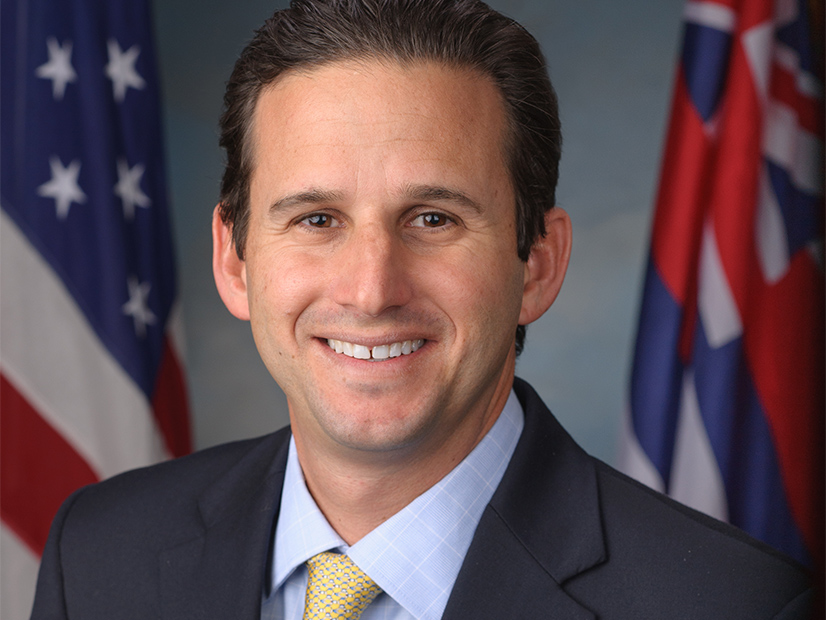The rollout of renewable energy and transmission lines needs to greatly accelerate to meet climate goals, but “permitting reform” efforts should not trample important environmental protections, speakers said Tuesday on a World Resources Institute webinar.
The grassroots of the environmental community often focus on protecting one important piece of land from development, with Sen. Brian Schatz (D-Hawaii) reminiscing that he got involved in activism initially to protect some beaches.
“The tools that exist in state and county and federal law, and rule and process and procedure, enable people to stop bad projects,” Schatz said. “The problem is that they are now being weaponized to stop the kind of planet-saving projects that we need.”
It is necessary to reduce the time it takes to build a new transmission line, but Schatz warned of the real possibility that nothing gets done this Congress.
“It is very unclear to me what the House is going to do, whether they’re serious about doing something on a bipartisan basis, or whether they just want to do something that’s sort of a messaging bill with a bunch of American Petroleum Institute talking points,” Schatz said.
Changing permitting laws will get some attention, but Schatz said that the effort could move forward outside of Congress at the administrative level and among state and local governments.
Schatz worked on the last Congress’ biggest attempt to make reforms in the area, a proposal backed by Sen. Joe Manchin (D-W.Va.) that did not eliminate any bedrock environmental laws but required greater coordination among federal permitting agencies.
Another key to getting the work done on time involves early and effective outreach to impacted communities to address any concerns they have.
“To the extent that the whole conversation around climate action has been on K Street and Wall Street, that has to change; everybody has to benefit from that,” Schatz said. “So, what I hear from people who are in environmental justice communities is a little different from what I hear from environmental justice advocates on the Hill. The people in environmental justice communities want to participate in the clean energy revolution. The people who are on the Hill, I think, are a little bit more in an old-school mentality where stopping things is virtuous, no matter what you’re stopping.”
Maryland Public Service Commission Chairman Jason Stanek noted that permitting is a recent issue that was not debated much when he was a staffer on the U.S. House Energy and Commerce Committee for Republicans. But just last week, that committee voted out 15 bills on permitting.
“Unfortunately, most of them were party-line votes,” Stanek said. “And as [Schatz] referenced, most of them are likely just messaging bills. We need to get serious about this conversation if we’re going to decarbonize; if we’re going to build the clean energy infrastructure that’s necessary to get us to where we’re going.”
“Permitting reform” has become shorthand for dismantling every kind of environmental protection related to building out the clean energy grid among many in Earthjustice President Abbie Dillen’s orbit.
“I think it behooves us to think about this framing in a big but much more discrete way, which is, how do we build out the clean energy that we need, as fast as we need to do and fairly?” Dillen said.
The issue goes beyond the federal government, with regional organizations, such as ISOs and RTOs, and states playing very important roles in building out the needed clean energy infrastructure, she noted. It would also help to give the federal government some more authority to be able to override some of the friction seen in the states and to give projects a one-stop shop for approval, Dillen said.
But it could prove difficult to pass any good legislation this Congress so it is important to use existing tools such as the Department of Energy’s and FERC’s limited backstop siting authority for transmission, Dillen said.
While it recently got amended by last year’s Infrastructure Investment and Jobs Act, that authority has been around for 18 years, and it has not led to the siting of a single transmission line, said American Clean Power Association General Counsel Gene Grace.
“There’s something amiss kind of with respect to federal transmission siting authority, in contrast with natural gas pipelines. … For all interstate pipelines, you go directly to FERC, and you can get a permit, and it’s not surprising,” Grace said. “When you look over the last decade, about 10,000 miles of gas pipelines have been built per year, compared to 1,800 miles of transmission lines.”
Transmission lines that are in the national interest should be sited at a one-stop shop, and Grace argued that should be FERC.




